At Athens Airport, I swapped one travel friend for
another. My friend John arrived in
Athens less than an hour after I said goodbye to Rodrigo. John has joined me on numerous trip in the 22
years since we’ve known each other. He
decided to join me for the Peloponnese Peninsula part of my planned trip after
I suggested it to him, while then touring Athens on his own and also spending a
few days in Rome.
I’ve long been interested in the Peloponnese Peninsula. The rugged,
irregularly-shaped, mountainous landmass seems to be quintessential Greece with
one of the highest concentrations of major sites from Classic Greek and earlier
Proto-Greek civilizations. In planning
an itinerary, I largely consulted Rick Steves Guide to Athens & the Peloponnese
which detailed the major attractions thoroughly, and also the itinerary of a
tour Explore Worldwide, the company with whom I just traveled in Albania, runs
in the region. They would seem to know
what to hit and what’s worth skipping.
I book most of my accommodations through Booking.
com and
usually have good experiences. In this case I was looking for a place on the
western outskirts of Athens that would be easy to reach on the highway but
would also enable us to avoid Athens morning traffic. I picked a budget-priced place that had some
decent looking pictures and amenities offered, importantly free parking, in
what seemed like an office area near a highway interchange. The reality turned out to be somewhat
different. Katrina Hotel is a place where it seems most guests stay by the hour
rather than the night, located in a seedy area adjacent to a shipyard with plenty
of third world hookers on the streets.
The air con and WiFi were fine, though, and we managed to survive not
only our first night there but also our return eight days later.
Since the late 1800s, the Peloponnese might qualify as an
island rather than a peninsula. In 1893 the Corinth Canal was completed,
cutting deeply through the 4-mile wide Corinth Isthmus to enable ships to
travel a shortcut between the Gulf of Corinth and the Aegean Sea.
The canal overlook is a popular stop with bus
tours on their way from Athens to the Peloponnese. What’s impressive about it
is not its width or length but rather its depth – that they would and could cut
down that far through solid rock to create it for that distance.
I had hoped to stop at the site of Ancient Corinth, but I
got completely lost on the way. It’s not
that I was actually lost; it was just that the signs I was following for it
disappeared and I ended up nowhere near it in the busy city center. We decided to skip it, possibly to try again
on our return in a week if there was time.
From Corinth we headed south to the region of Argolis, the
southeastern part of Peloponnese to take in the first of the peninsula’s five UNESCO
World Heritage sites, the Sanctuary of Aesclepius at Epidaurus. Epidaurus is
actually best known for its 4th-century B.C. theater. Built of
limestone, it’s one of the best preserved ancient buildings still in existence,
so-well preserved and with such good acoustics that it’s used today for summer
performances of ancient Greek drama during the annual Athens Epidaurus
festival.
The rest of the site consists of and small museum and less
well-preserved excavated ruins of the Sanctuary of Asclepius, the god of
healing and son of Apollo and Coronis. I honestly can’t say I had heard of the
god Asclepius before planning for this trip, but it sounds like he was
significant in the Greek pantheon. The
site consists of foundations and walls of numerous buildings of a Greek shrine,
including temples, baths, sanctuaries, gymnasion, and odeon.
One unique in
function was the enormous katogogeion, a hostelry for pilgrims and patients
that went to Epidaurus in search of healing.
It sounds like Epidaurus was a kind of ancient spa town.
After a very hot visit to the inland archaeological site, we
returned to the coastal town of Epidaurus. It’s now a small modern town built
around a harbor, but the “paleo” in its official name comes from the fact that
some ruins there indicate that it is in fact older than the famous UNESCO
site. We found a good restaurant to have
an outdoor Sunday afternoon dinner. I
finally got to have some Rabbit Stifado, a dish I had been craving since I got
to Greece. I’m used to rabbit coming in
small portions in restaurants, but here I got three generous pieces of what was
clearly a quite large rabbit, all smothered in onions and sauce.
The road south toward Ermioni rises and tumbles over the olive
grove covered hills and provided great views back toward coastal
Epidaurus. We also got some views of
Poros town on the Saronic Gulf island of Poros a short distance across the
strait from Galatas village. Poros was not on our itinerary, but it’s supposed
to be one of the prettiest town centers in Greece.

 Epidaurus, Greece
Epidaurus, Greece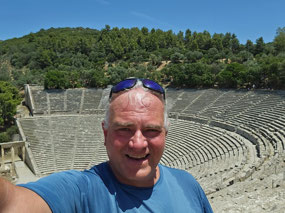
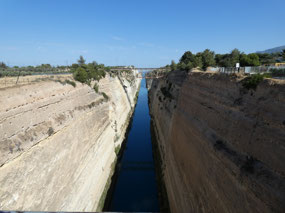
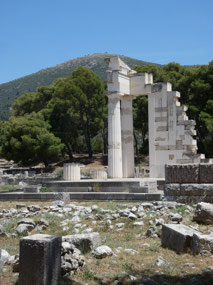
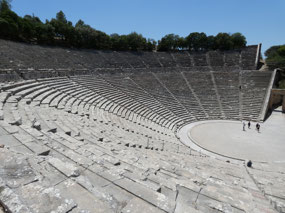



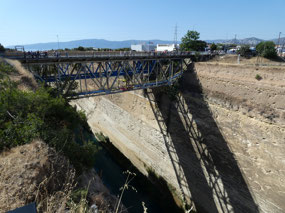
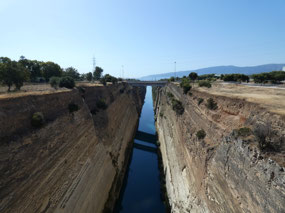
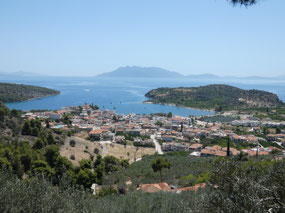

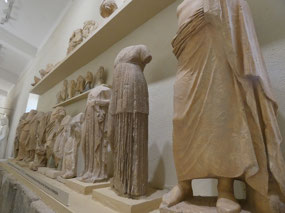
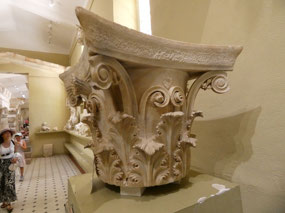
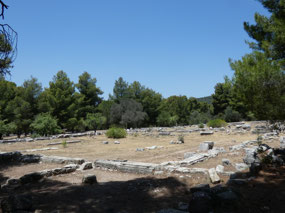
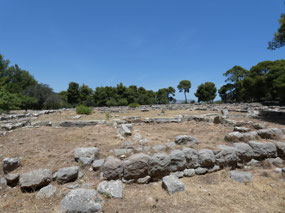
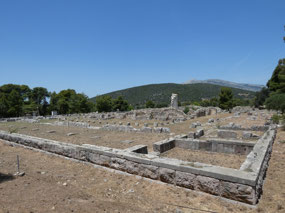

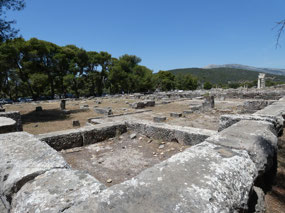
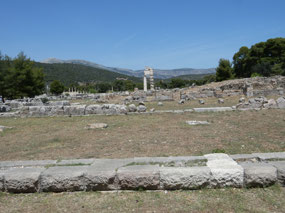
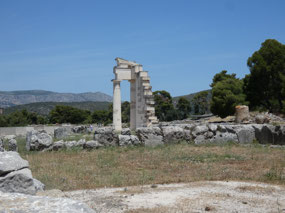
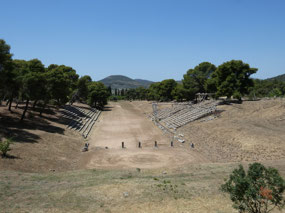
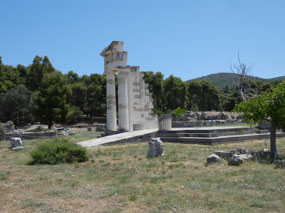
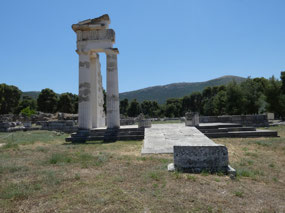
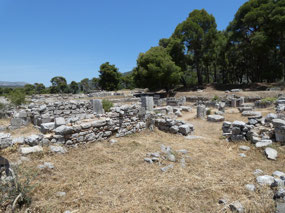
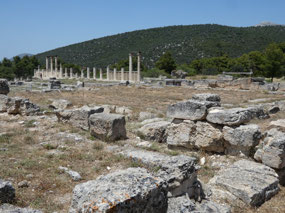
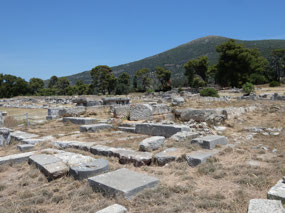
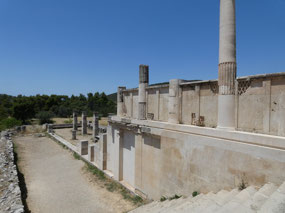
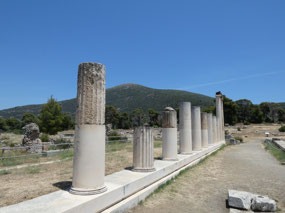

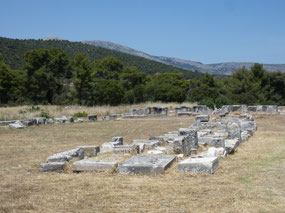
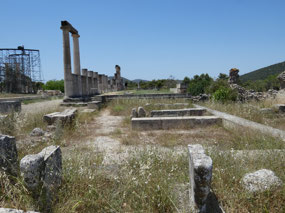
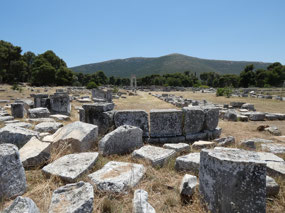
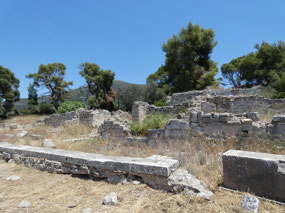
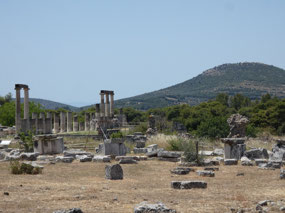
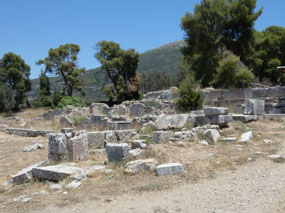
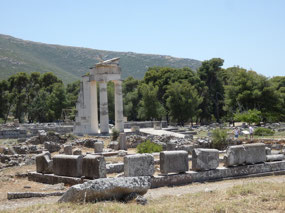
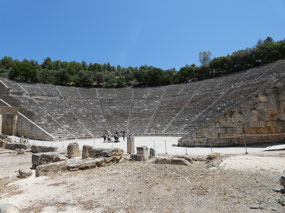
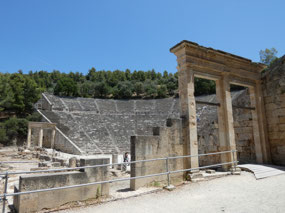
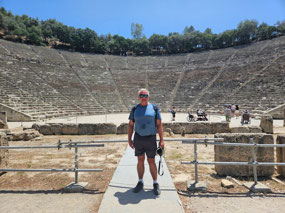
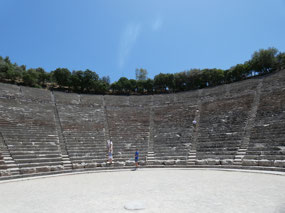

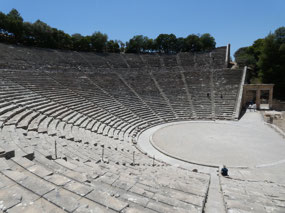
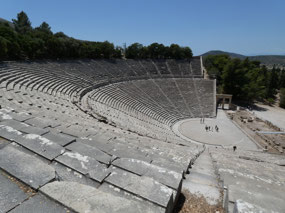
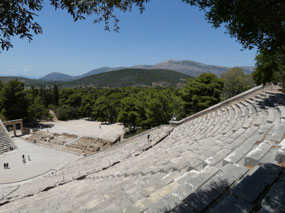
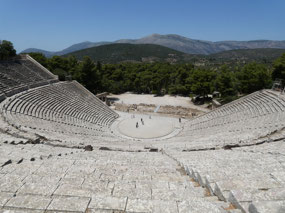
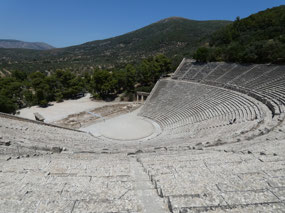

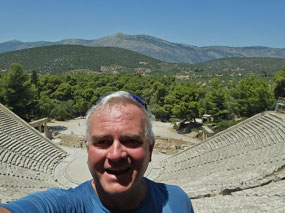
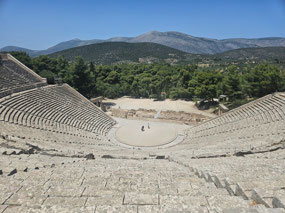
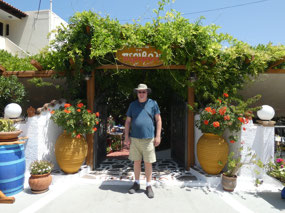
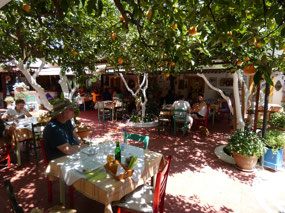
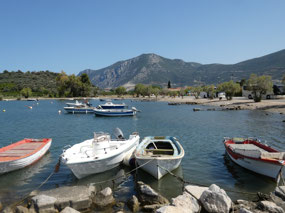
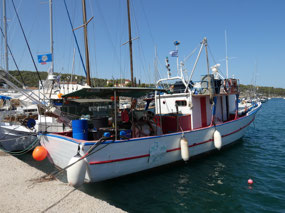
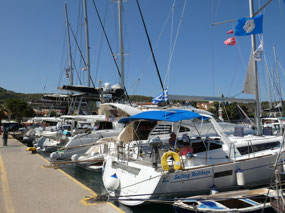
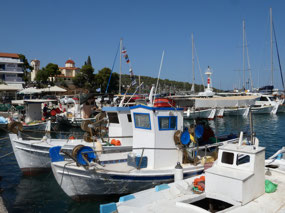
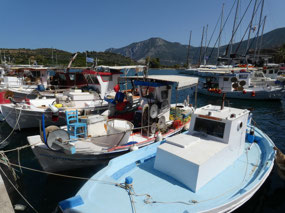
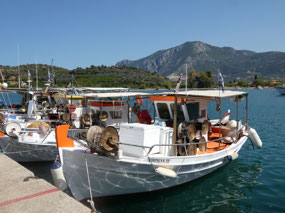
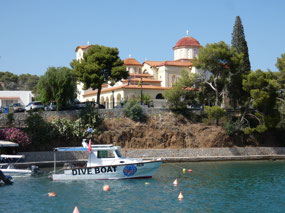
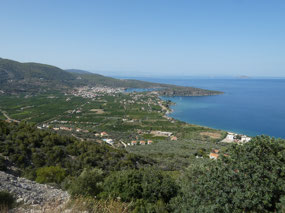

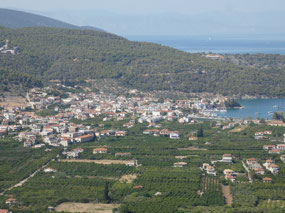

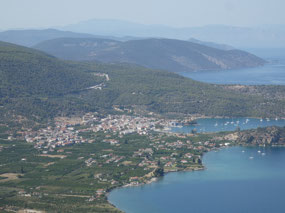
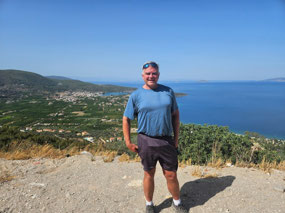
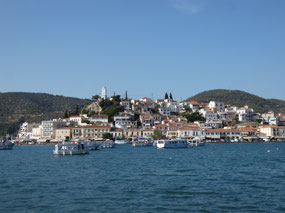
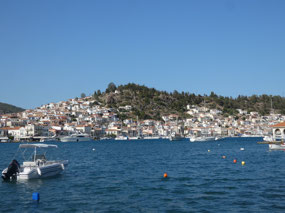
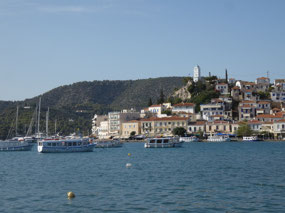
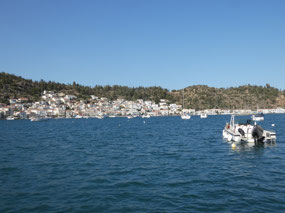
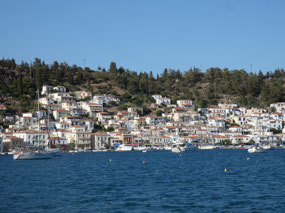

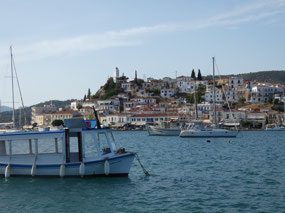
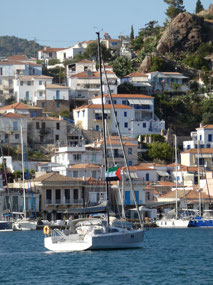
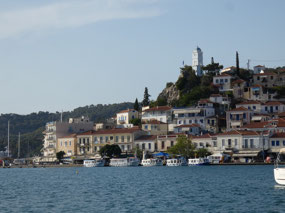
2025-05-23